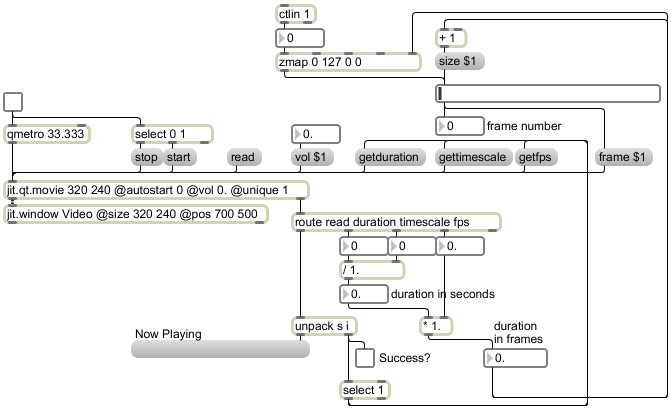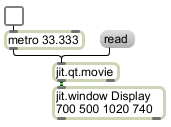The jit.qt.movie object, for playing QuickTime videos, enacts many of the features made available by QuickTime, so it has a great many attributes and understands a great many messages. You can set some of its attributes with messages, such as its playback rate (with a rate message) or its audio volume (with a vol message). Some of its attributes are traits of the loaded movie file, and can’t be altered (at least not without altering the contents of the movie file itself), such as its duration (the duration attribute). This patch shows how you can query jit.qt.movie for the state of its attributes, use that information to derive other information, and then use messages to telljit.qt.movie what to do, such as using a frame message to tell jit.qt.movie what frame of the video to go to.


